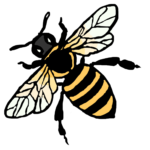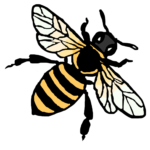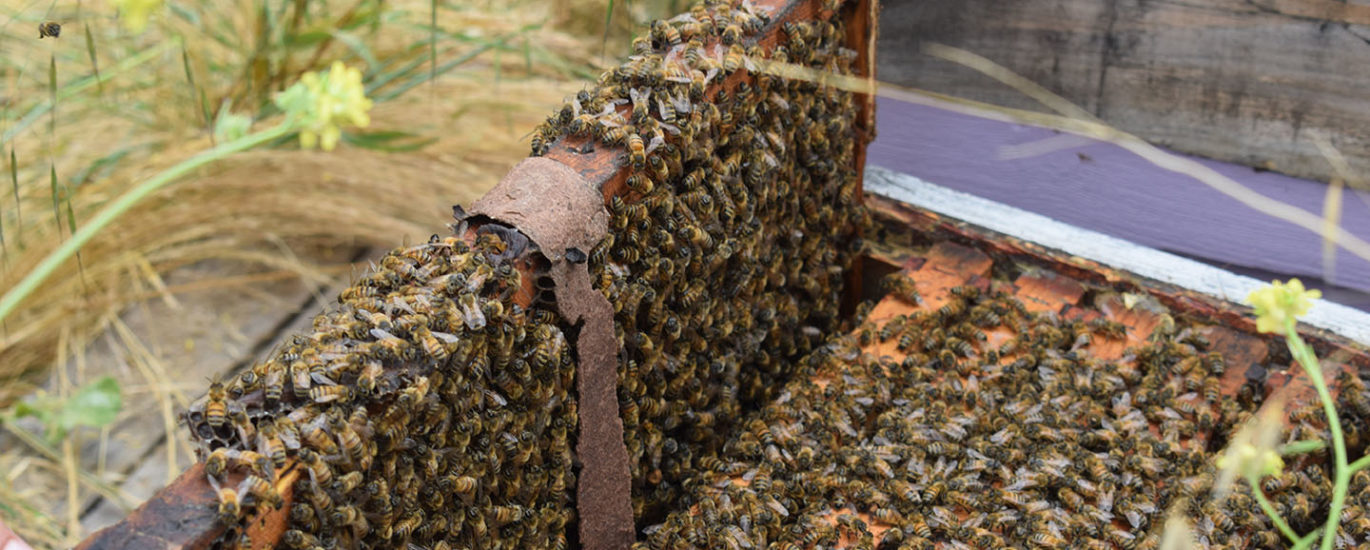By Alex Ruther
On a cloudy afternoon in May, students in the Cal Poly beekeeping class gathered at the campus beehives and began pulling out frames from a beehive box. Bees flew around the air and landed on students who wore white beekeeping jackets and veils to protect themselves as they passed the buzzing frames around the class.
Cal Poly beekeeping instructor Jeremy Rose smiled as he watched students pull bee-coated frames from the box one by one. Every inch of the frame was dripping with honey bees—a thrilling sight for Rose, who is also a commercial beekeeper. After having struggled to keep his bees alive during the recent drought years, this year’s busy hives have signaled relief.
“After another year, another drought, another year, another drought,” Rose said. “Keeping the business going, keeping the beehives going, keeping the Cal Poly program going, I feel like that is an accomplishment.”
The heavy rainfall that fell on the Central Coast from January to March 2023 brought hope to many local beekeepers who have struggled to keep their beehives alive during the drought years since 2019. Rose and his colleagues are now optimistic that the foraging season taking place from this spring to mid-summer will allow honey bees to collect enough pollen to produce a surplus of honey. This will allow the honey bees to naturally survive in their hives and grow their populations in the upcoming years, and will also allow for beekeepers like Rose to produce more honey than before.
Climate change affects pollinator populations due to the change in weather patterns from the warming of the planet, which has disrupted the synchrony between flowering plants and their pollinators, according to the USDA.
The rising occurrence of warmer temperatures during late fall and winter in northern latitudes is posing a threat to honey bees. This predicament arises from the extended foraging period caused by the higher temperatures during these seasons.
 Warmer temperatures that have occurred in the late fall and winter in areas such as California have caused a significant challenge in reducing winter colony losses for honey bees due to the warm temperatures extending into the season when bees are foraging.
Warmer temperatures that have occurred in the late fall and winter in areas such as California have caused a significant challenge in reducing winter colony losses for honey bees due to the warm temperatures extending into the season when bees are foraging.
Rising temperatures disrupt the way bee communities are organized and how they use their resources. This makes it easier for varroa mites to move from one group of bees to another, spreading diseases it carries throughout bee farms.
During the drought years, Rose and Cal Poly beekeeping instructor and beekeeper Patrick Frazier did everything they could to keep their colonies alive, Rose said. They bred bees that were able to survive through the drought and selectively bred bees that had resistant genes to bee-killing parasitic varroa mites.
After trying selective bee breeding, they concluded that it wasn’t working because the bees couldn’t survive here locally due to the environment being too dry. They reduced their population by decreasing the number of beehives in each area so fewer beehives were trying to survive in the same area naturally.
“The drought was a huge problem,” Rose said. “If the honey bees don’t have sufficient flowers in nature that are watered by the rain, and [flowers] are not coming out or barely blooming and then just turning brown and dying, then the honey bees are not getting enough food.”
Drought years are tough for beekeepers, Rose said. During those years, bees only make enough honey for what they need to eat.
This winter California marked its third wettest rainy season in recorded U.S. history, which triggered a super bloom that began in the middle of April.
 The super bloom brought vibrant colors and lush flowers full of pollen to the fields of California.
The super bloom brought vibrant colors and lush flowers full of pollen to the fields of California.
A super bloom occurs when a massive seed bank under the ground waits to germinate all at once, and when the rains (such as in the past winter) create a favorable condition for the plants to germinate they begin to flower, according to San Luis Obispo Botanical Gardens propagation support and environmental horticulture junior MJ De La Cruz.
The bloom is short due to these plants growing all at once, which allows for the bees to only collect a quick wave of pollen from the super bloom, Rose said
During heavy rain years such as this year, the black sage plant’s super bloom is expected to help the honeybee pollination season.
The black sage plant grows around the San Luis Obispo hills and is a beneficial bloom for the bees.
The plant blooms for around 10 weeks, which allows the beehives to raise multiple cycles of young.
Because of how strong the black sage plant’s bloom is during years such as this, Rose and Frazier have been collecting a different honey than usual, Rose said.
This year the honey bees are producing a lot of sage honey which comes from the sage plant.
The honey is a lighter color, instead of the darker honey that was more common during the drought.

“The honey is almost clear as water – so on a rain year where there’s less [water] like in a drought year the honey will be darker and it crystalizes faster, and on a year like this it’ll be almost clear as water and it won’t crystalize ever,” Frazier said.
Due to the excess honey being extracted from the hives, Frazier and his colleague will have enough honey to sell at the local farmers market and to students on campus as well, Frazier said.
Frazier and Rose said they are optimistic that this season will allow them to rebuild their honey bee populations to begin growing in the upcoming year.
Because of the recent wet weather, Rose said he hopes that pollination season will end late around the beginning of July. The extended season would allow the honey bees to potentially bring in enough nectar and honey to allow them to survive until the next season in April.
During a good year like this one, beekeepers can begin to grow their beehive populations by splitting hives and refilling empty hives to build back the population losses they encountered during the past few winters, Frazier said.
If the heavy rain returns next winter, local beekeepers can continue growing their honey population and extracting more and better honey than before, Rose said.
“Now we’re in the season where things are turned around and it’s exciting,” Rose said. “Every single student is seeing interesting things we haven’t seen in a long time, and it’s thrilling to see the hives fill up with honey. There’s nothing else on earth like that.”
Feature image and video by Cate Goodman








